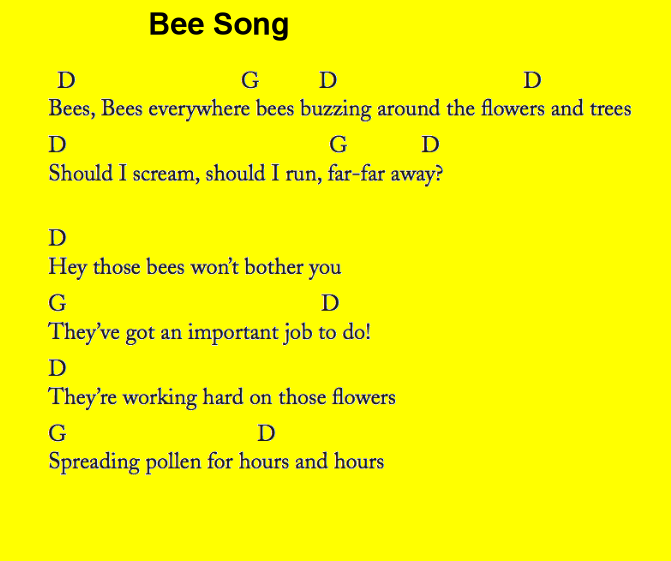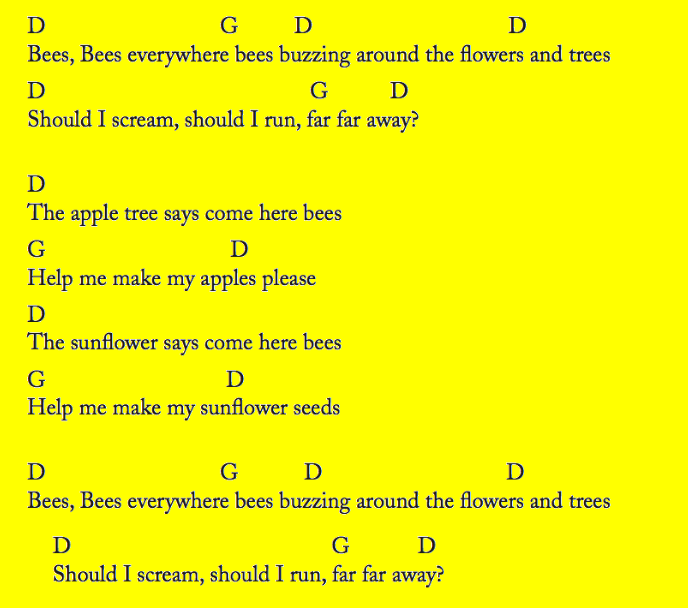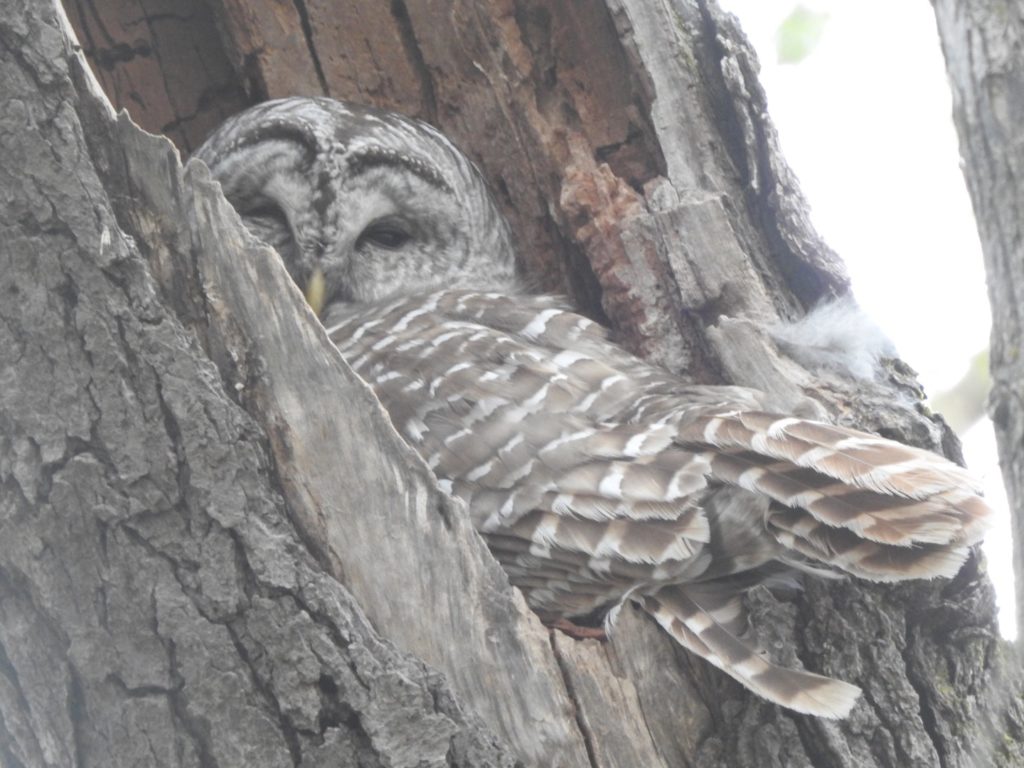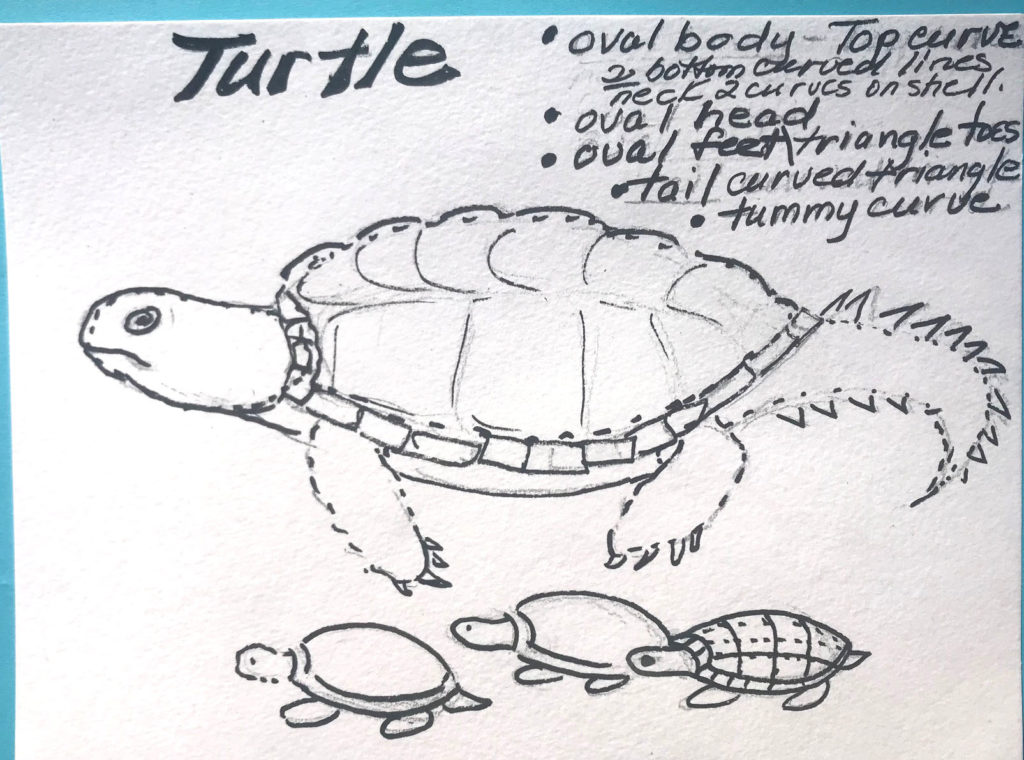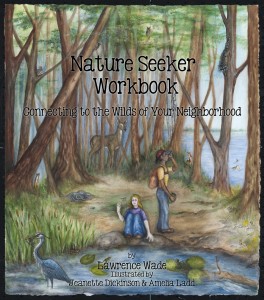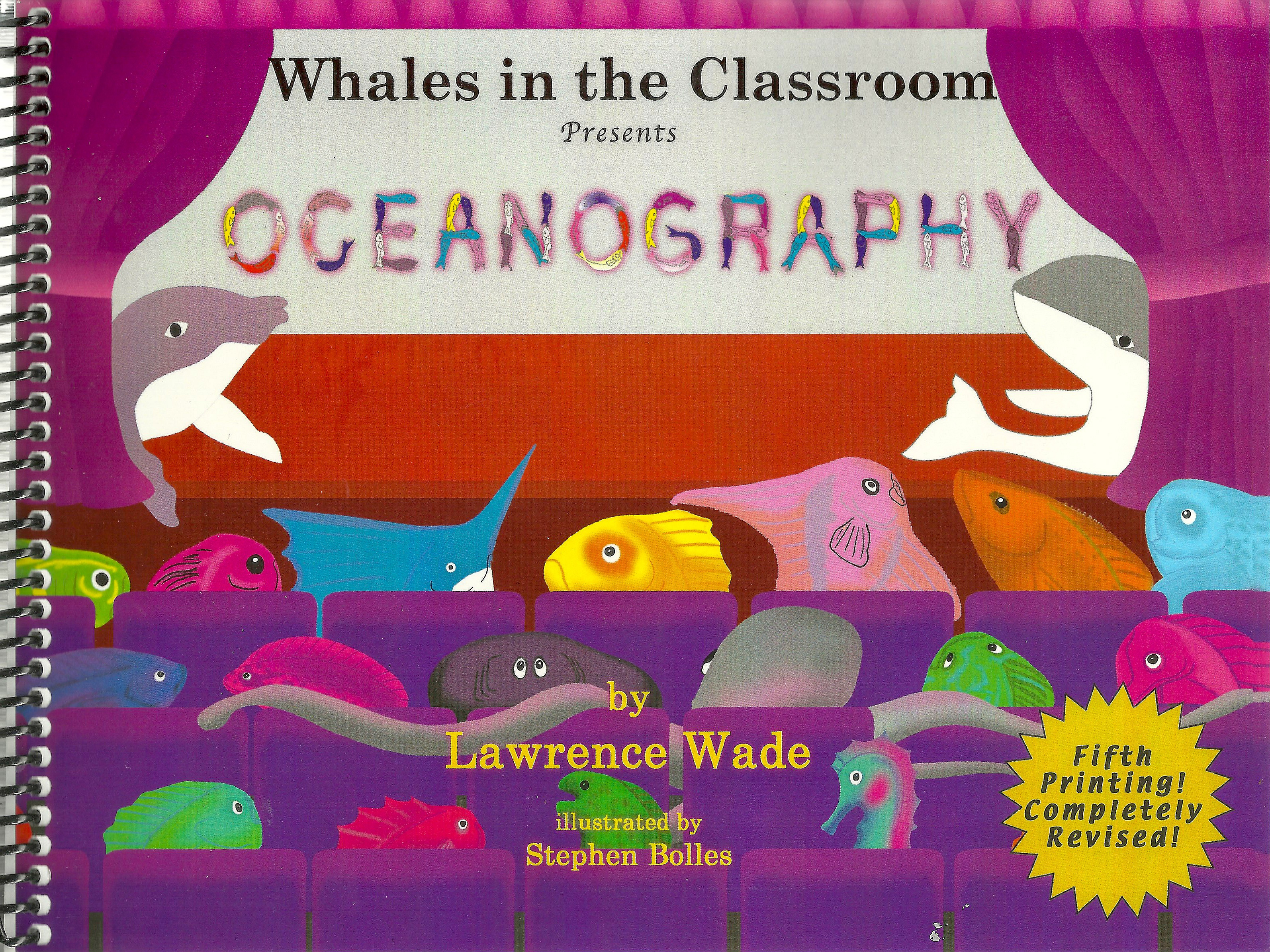Barred owl May 6, 2020
What’s up?
1. Tick Song
2. Test Your Nature IQ
3. View the Minnesota Geology Program
4. Download the Glacial Rocks Chart
5. Make a Robin’s Nest
6. Drawing with Artist Karen Anderson
7. Sing along with the Bee Song
Did you miss any of the first seven weeks of Nature School? Click here to see links to the previous lessons.
Safety Alert – “Watch out for Ticks” Song
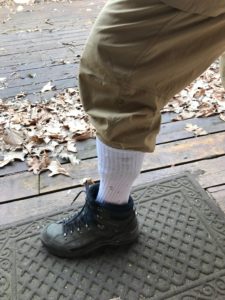 Ticks are out
Ticks are out
Got to watch out!
Walking paths – Yes
Deer trails – No
You’ll find ticks
in tall grass
So
Pull your socks over your pant leg.
Look for ticks crawling up.
Tick check – Tick check
Several times.
When you’re home
Check again.
Cindy Eyden came up with the idea for this song.
Thanks to Karen Anderson, Mark Storck, Stephen Bolles, Ann West, Justin Blum and Cindy Eyden for contributing to Nature School this week. Special thanks to Janine Pung for her suggestions on how to improve the text.
1. Test Your Nature IQ
A. What animal makes this sound?
Mating calls of leopard frogs in a breeding pond 4/27.
B. What is this tree? Why were the buds important in the past?
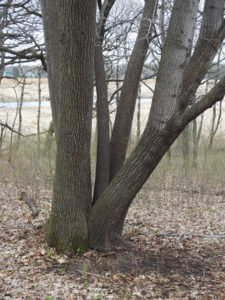
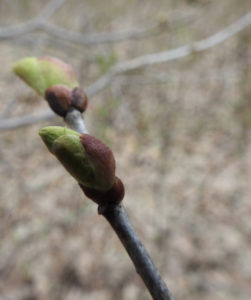
Basswood or Linden trees often have multiple trunks. The buds on a basswood are just opening this week (May 1). Indigenous people called this the “green bean tree.” For a short time, the buds were harvested. If you are going to try a bud from a “green bean tree,” take just one bud and don’t forget to thank the tree for all that it does.
C. What animal is making this call?
This is the call of the Barred Owl. Listen to the call again and see if you can hear, “Who cooks for you, who cooks for you all.”
C. You are now a nature investigator. In the photo below, you found some evidence beneath a tree. What does it indicate?
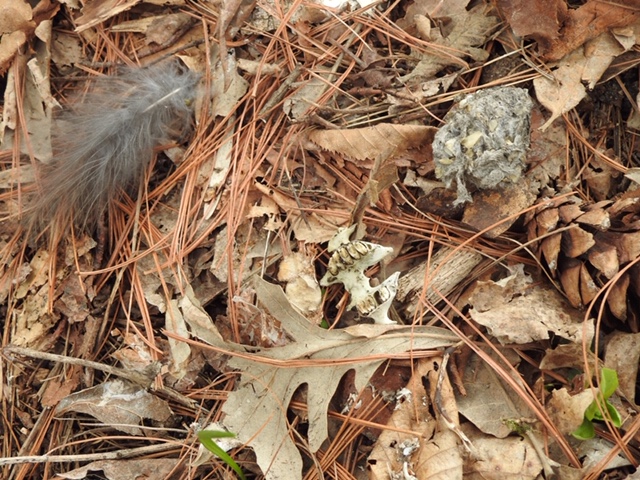
Pictured in this photo are a downy feather, a squirrel jaw and an owl pellet. It possibly indicates that an owl uses the tree as a roost and coughed up a pellet. Inside the owl pellet is the fur and bones of the animals it ate on the previous night.
2. View the Minnesota Geology Program
What to do:
a. View the program on Minnesota Glacial Rocks.
b. Download the student worksheet.
c. Complete the worksheet and put it in your nature notebook.
Click here to see the Minnesota Geology Program.
Click here to download the student worksheet.
3. Minnesota Glacial Rocks
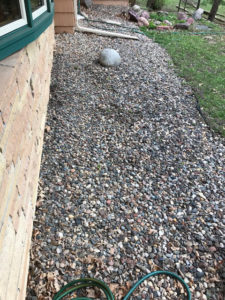 What to do:
What to do:
a. Download and print pages 1 and 2 of Minnesota Glacial Rocks.
b.Search for glacial rocks. Good places to look are areas with landscaping rocks (see photo on left). Tip: When I go searching, I take along a spray bottle filled with water. I spray the rocks because it makes it is easier to see the different types of rocks when they are wet.
c. Try to find all 12 rocks on the charts. Label each rock you find, then take a picture of the collection. Put the photo in your nature notebook.
To download and print the page 1, click here. Put the page in your nature notebook.
To download and print page 2, click here. Put the page in your nature notebook.
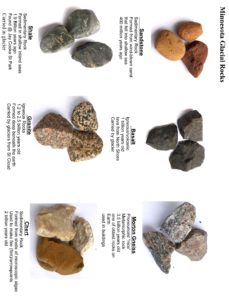
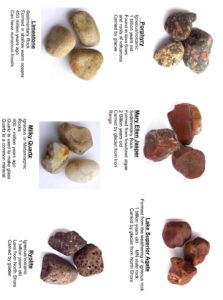
4. Make a Robin’s Nest
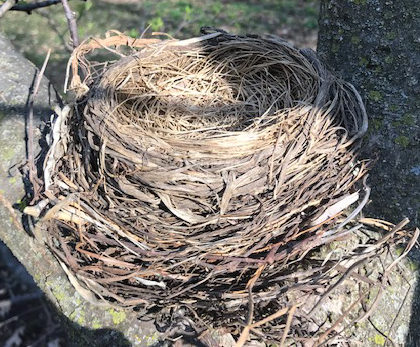 Robins are making their nests now. Here is your opportunity to make one, too. You will use your hands to make your nest while a robin uses only its beak.
Robins are making their nests now. Here is your opportunity to make one, too. You will use your hands to make your nest while a robin uses only its beak.
Conservation note: It is illegal to remove a bird nest from nature.
What to do:
a. Gather the materials needed for the nest: dried marsh grass and mud.
b. Make the nest with mostly grass, and use the mud to hold it together.
c. Make the nest about 4 inches in diameter.
d. Do you have a tree, you can put the nest in? It should be 4-8 feet above the ground.
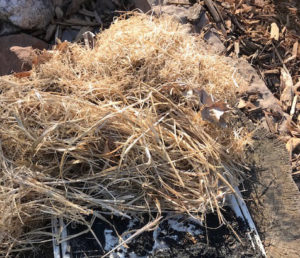
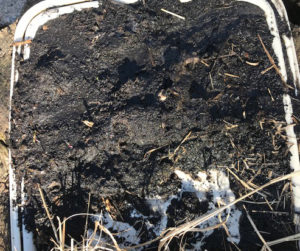
5. Art and Nature with Karen Anderson
Our artist in residence, Karen Anderson, continues our drawing lessons. This week she shows you how to draw a snapping turtle.
What to do:
a. Practice the snapping turtle drawing in your nature notebook by using Karen’s handout, “Turtle.”
b. To download and print, “Turtle” (seen below), click here.
6. The Bee Song
There is a lot of bee activity on the flowering plants now. The bumblebee queens are starting their nests and gathering pollen for the first generation of workers.
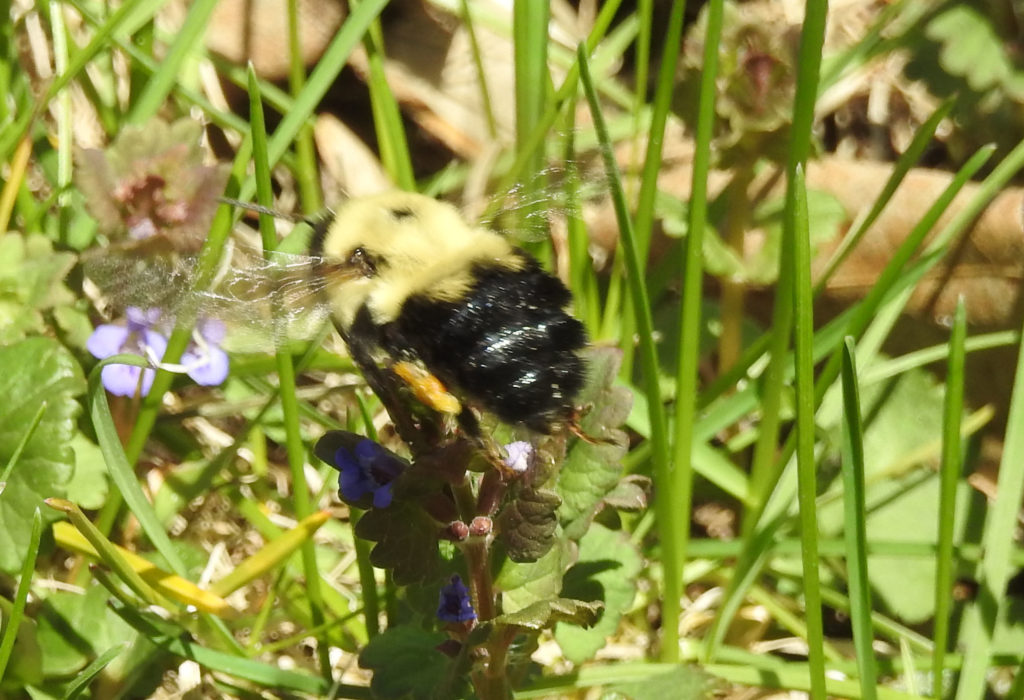
What to do:
a. Click here to listen to the Bee Song
b. Sing along using the lyrics below: